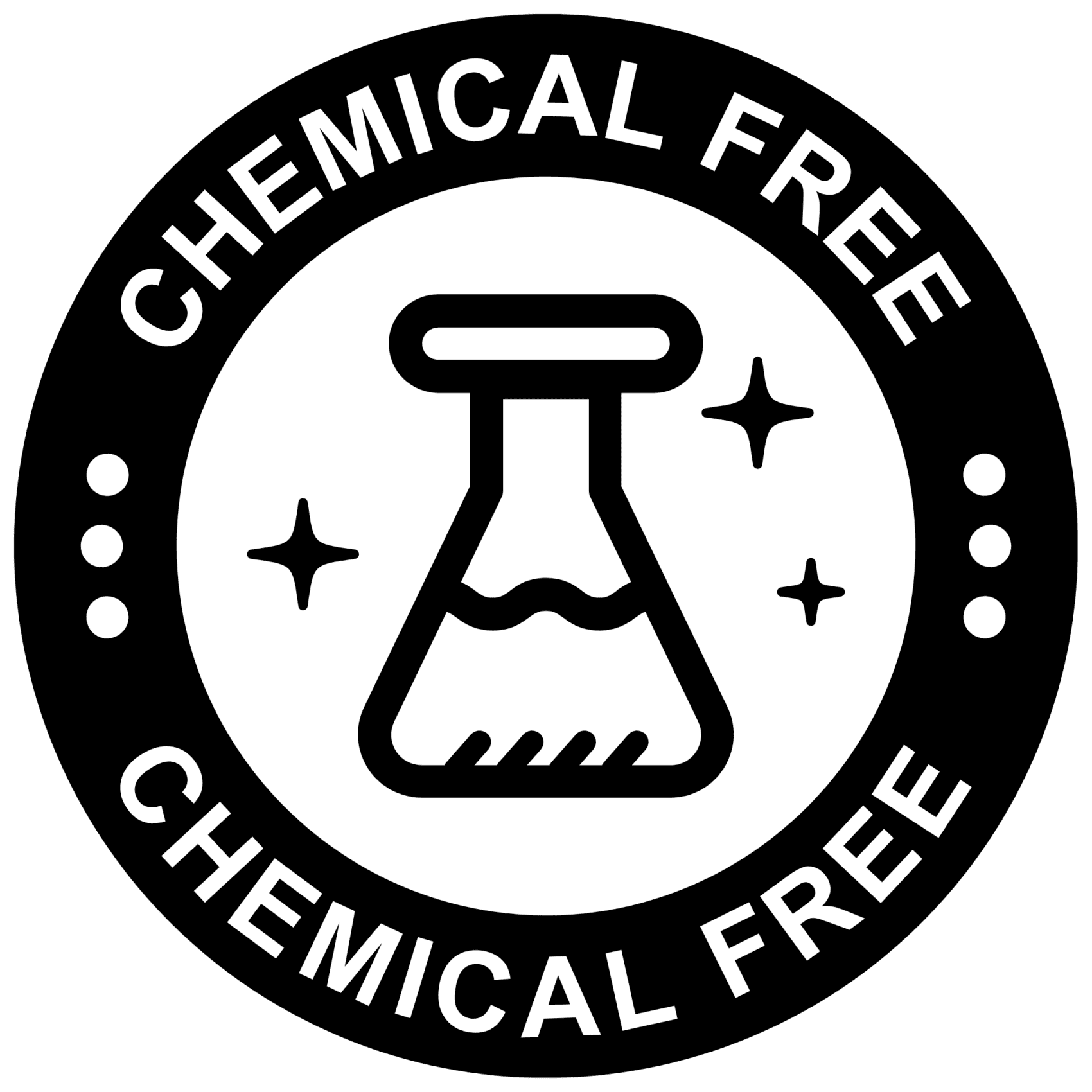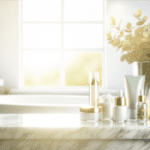Understanding Endocrine Disruptors
Definition and Mechanism of Action
Endocrine disruptors are natural or synthetic chemicals that can interfere with the endocrine (hormonal) system in the body. These substances may mimic, block, or alter the normal function of hormones, leading to a cascade of effects on development, reproduction, and other vital bodily functions. They can act by binding to hormone receptors, altering hormone concentrations, or modifying the body’s hormonal signaling pathways.
Sources of Endocrine Disruptors
These chemicals are ubiquitous in our environment and can be found in a variety of sources including skincare and cosmetic products, plastics, pesticides, non-organic produce, and even in the water supply. Common endocrine disruptors include bisphenol A (BPA), phthalates, and certain parabens, which are often present in the composition of personal care items.
The Endocrine System and Hormonal Functions
The endocrine system is a network of glands that produce and secrete hormones, the body’s chemical messengers. These hormones regulate numerous physiological processes including metabolism, growth, mood, fertility, and sexual function. The system includes the hypothalamus, pituitary gland, thyroid, adrenals, pancreas, and reproductive organs (testes in men and ovaries in women), each playing a specific role in maintaining homeostasis.
Common Hormones and Their Roles
Hormones such as estrogen, testosterone, insulin, and thyroid hormones are critical for normal bodily functions. Estrogen and testosterone regulate sexual function and reproduction, insulin controls blood sugar levels, and thyroid hormones influence metabolism. Even slight imbalances in these hormones, potentially caused by endocrine disruptors, can lead to significant health issues.

Do you have the most commonly used but toxic, disease bringing chemicals in your skin care? Many chemicals in skincare are hormone disruptors and make menopause symptoms worse.
Find out more…
Health Risks Associated with Endocrine Disruptors
Short-term and Long-term Health Effects
Endocrine disruptors are chemicals that can interfere with endocrine (or hormonal) systems. These disruptions can cause cancerous tumors, birth defects, and other developmental disorders. Any system in the body controlled by hormones can be derailed by hormone disruptors. Short-term exposure to these chemicals can lead to immediate and noticeable effects, such as skin rashes or allergic reactions. However, it is the long-term exposure that is more concerning, as it can lead to more serious health issues. These include an increased risk of cancer, particularly hormone-sensitive cancers such as breast, ovarian, and prostate cancer. Other long-term effects can include neurodevelopmental delays in children, as well as changes in immune function.
Impact on Reproductive Health
One of the most alarming risks associated with endocrine disruptors is their impact on reproductive health. These chemicals can mimic, block, or otherwise interfere with the body’s natural hormones, such as estrogen and testosterone, leading to reproductive issues. In women, exposure to these chemicals has been linked to problems such as early puberty, infertility, irregular menstrual cycles, and conditions like endometriosis and fibroids. In men, endocrine disruptors can affect sperm count, lead to testicular cancer, and cause other reproductive issues.
Links to Metabolic Disorders
Endocrine disruptors have also been associated with metabolic disorders. They can alter the body’s metabolism, leading to obesity, insulin resistance, and diabetes. These chemicals can affect how the body stores fat and processes insulin, which can disrupt normal metabolic function. The risk is particularly high when exposure occurs during critical periods of development, such as in the womb or during early childhood.
Environmental Impact and Wildlife
The effects of endocrine disruptors extend beyond human health, with significant environmental impacts as well. Wildlife, particularly aquatic species, can be severely affected by these chemicals. For example, exposure to certain pesticides has been shown to cause feminization of male fish, leading to decreased populations. In amphibians, endocrine disruptors can cause deformities and population declines. These environmental impacts highlight the pervasive nature of endocrine disruptors and their ability to disrupt ecosystems.
Endocrine Disruptors in Consumer Products
Prevalence in Skincare and Cosmetics
The presence of endocrine disruptors in skincare and cosmetics is not a fringe issue but a widespread concern. These chemicals, which can interfere with the body’s hormonal functions, are found in a variety of products we use daily. From moisturizers and sunscreens to lipsticks and shampoos, the potential for exposure is significant. The cosmetics industry, a multi-billion dollar enterprise, is underregulated, which means that many products on the shelves may contain these harmful substances without adequate safety testing or disclosure.
Common Endocrine Disruptors in Skincare
Several chemicals identified as endocrine disruptors are commonly found in skincare products. Phthalates, used to increase the flexibility of plastics in cosmetics, are known for their hormone-disrupting effects. Parabens, widely used as preservatives, can mimic estrogen and have been detected in human breast tumors. Bisphenol A (BPA), used in the manufacturing of plastic containers, is another endocrine disruptor that can leach into skincare products. Other chemicals like triclosan and various UV filters have also raised concerns for their potential to interfere with hormone systems.
The Problem with Plastic Packaging
Plastic packaging is not just an environmental issue; it’s a health issue too. Many plastics contain substances like BPA, which can act as endocrine disruptors. When skincare products are stored in such containers, there is a risk that these chemicals can leach into the product and then be absorbed by the skin. The widespread use of plastics in the cosmetics industry exacerbates the potential for exposure to these harmful chemicals.
Alternatives to BPA and Their Safety
In response to consumer concerns, some manufacturers have turned to BPA alternatives like bisphenol S (BPS) and bisphenol F (BPF). However, recent studies suggest that these substitutes may have similar endocrine-disrupting effects as BPA. The search for truly safe alternatives to BPA in product packaging is ongoing, with materials like glass and certain types of bioplastics showing promise. Consumers looking to reduce their exposure to endocrine disruptors should consider products with safer packaging options.
Understanding the prevalence and risks associated with endocrine disruptors in consumer products is crucial for making informed choices. By identifying harmful chemicals and opting for products with safer packaging and ingredients, consumers can take proactive steps to protect their health and the environment.

Doubting chemicals in skincare and femcare? Well done! Choose chemical-free products whenever possible.
Identifying Harmful Chemicals in Skincare
Phthalates and Parabens
When it comes to skincare, two of the most notorious endocrine disruptors are phthalates and parabens. Phthalates, often found in products as diethyl phthalate (DEP), are used to make fragrances last longer and plastics more flexible. Parabens, including methylparaben and propylparaben, serve as preservatives to prevent the growth of bacteria and mold. Both of these groups of chemicals can mimic estrogen and disrupt hormonal balance, potentially leading to reproductive issues and increased risk of certain cancers.
Other Potentially Harmful Chemicals
Beyond phthalates and parabens, there are numerous other chemicals that may pose risks as endocrine disruptors. These include:
- Triclosan: An antimicrobial agent found in some soaps and sanitizers.
- Formaldehyde: A preservative and known carcinogen.
- Oxybenzone: A common ingredient in sunscreens that can disrupt hormonal activity.
- Sodium lauryl sulfate (SLS) / Sodium laureth sulfate (SLES): Surfactants that can cause skin irritation and may be contaminated with potentially harmful byproducts during manufacturing.
- Propylene glycol: A skin-conditioning agent that can irritate the skin and may be toxic to the immune system.
These chemicals can be absorbed through the skin and potentially lead to various health issues, including skin irritation, allergies, and endocrine disruption.
The Issue with Synthetic Fragrances
Synthetic fragrances, listed simply as “fragrance” or “parfum” on ingredient labels, are a complex mixture of many chemicals, some of which may be harmful. Companies are not required to disclose the specific components of their fragrances due to trade secret laws. This lack of transparency makes it difficult for consumers to know what they are applying to their skin. Fragrances can contain phthalates, which are not always listed separately, and can lead to hormonal imbalances and other health concerns.
To protect your health, it is crucial to be vigilant about the skincare products you choose. Opt for products that are free from phthalates, parabens, and synthetic fragrances. Look for certifications and labels that indicate a product is free from these harmful chemicals. Additionally, consider using the Environmental Working Group’s Skin Deep database to research product safety and find healthier alternatives.
Do you know the three main ways that your body gets in touch with harmful chemicals with everyday products? Knowledge is Power!
The Ultimate Detox Guide will tell you how to lower your exposure to harmful chemicals!

Strategies to Avoid Endocrine Disruptors
Choosing Safer Packaging and Storage
One of the simplest ways to reduce exposure to endocrine disruptors in skincare is to opt for products with safer packaging. Plastics, particularly those marked with recycling codes #3 (PVC), #6 (PS), and #7 (other), can leach harmful chemicals like phthalates and bisphenol-A (BPA). Instead, look for skincare housed in glass, stainless steel, or coated aluminum containers. These materials are less likely to interact with the product and do not contain harmful plasticizers.
Reading and Understanding Product Labels
Understanding product labels is crucial in identifying endocrine disruptors. Look for and avoid ingredients such as phthalates (often hidden under ‘fragrance’ or ‘parfum’), parabens (such as methylparaben, propylparaben), and other harmful chemicals like triclosan and formaldehyde releasers. Remember, the absence of ‘paraben-free’ or ‘phthalate-free’ labels doesn’t guarantee safety, as not all harmful chemicals are required to be listed due to proprietary laws.
Natural and Organic Skincare Alternatives
Switching to natural and organic skincare products can be a safer option, as they are less likely to contain synthetic endocrine disruptors. However, it’s important to note that ‘natural’ doesn’t always mean safe, as some natural ingredients can also act as hormone disruptors. Always research the brand and their ingredient sourcing, and look for certifications like USDA Organic or EcoCert to ensure the integrity of the products.
The Number 1 Tip How to Easily Avoid Toxic Skin Care
ONLY USE WATER-FREE SKIN CARE!
To understand this tip, it is important to remember that water is a potential breeding ground for bacteria. This is why cremes, lotions, moisturizers, balms that contain water require chemical preservatives that kill bacteria and microbes. And almost every skin care product is made with water. It is standard in the industry. Oftentimes, water-based creams, lotions, balms and moisturizers contain up to 80% water, sometimes even 95%? The rest are chemicals and a tiny amount of a natural ingredient that they then focus their marketing on. Like ”with natural ingredients” or “with natural Aloe Vera” etc. This is very misleading. And women pay the price with their health. Apart from the fact they are (over)paying for mostly water, really.
The key to “chemical-free” is that the skin care product is water-free.
Because then it does not have to have chemical preservatives. Simply check the label for “WATER” (which can also be listed as EAU, AQUA, H2O or JUICE). This would be at the top of the ingredient list.If the product contains water, then put it away in order to avoid chemicals.
Only PICK WATER-FREE creams, lotions, moisturizers, balms, etc.
Lifestyle Changes to Reduce Exposure
- Avoid heating products in plastic: Never warm skincare products in plastic containers, as heat can increase the leaching of chemicals.
- Minimize direct contact with receipts: Thermal paper often contains BPA, so handle receipts sparingly and wash hands afterward.
- Reduce use of canned goods: Many cans are lined with BPA-containing resins; opt for fresh or frozen alternatives.
- Use filtered water: Some tap and bottled waters may contain endocrine disruptors; filtering water can reduce this risk.
By making these changes, you can significantly reduce your exposure to endocrine disruptors not only in skincare but in your overall environment.
Balancing Hormones Naturally
Dietary Adjustments and Nutrition
One of the most effective ways to balance hormones naturally is through dietary adjustments and proper nutrition. Consuming a balanced diet rich in whole foods can provide essential nutrients that support hormonal health. Incorporating a variety of fruits, vegetables, lean proteins, and whole grains ensures an intake of vital nutrients like fiber, antioxidants, and healthy fats. Omega-3 fatty acids, found in foods like fatty fish, flaxseeds, and walnuts, are particularly beneficial for reducing inflammation and promoting the production of healthy hormones. Additionally, minimizing processed foods, sugars, and refined carbohydrates can help maintain stable blood sugar levels, which is crucial for hormonal equilibrium.
Exercise and Stress Management
Regular physical activity is another cornerstone of hormonal balance. Exercise helps to reduce insulin levels and increase insulin sensitivity, which is important for metabolic health. Activities such as yoga, walking, and strength training can be especially beneficial. Alongside physical exercise, managing stress is imperative for hormonal health. Chronic stress leads to elevated cortisol levels, which can disrupt hormonal harmony. Techniques such as meditation, deep breathing exercises, and spending time in nature can help mitigate stress and maintain cortisol at healthy levels.
Herbal Supplements and Their Efficacy
Herbal supplements can also play a role in balancing hormones. Herbs like ashwagandha (withania), black cohosh, and maca have been traditionally used to support hormonal health. However, the efficacy of these supplements can vary, and it’s important to approach them with caution. Consulting with a healthcare professional before starting any herbal supplement is recommended to ensure they are appropriate for your individual needs and do not interact with other medications.
Professional Guidance and Hormone Testing
While lifestyle changes can significantly impact hormonal balance, seeking professional guidance is often beneficial. A healthcare provider can offer personalized advice and may recommend hormone testing to better understand your hormonal status. Hormone testing can provide valuable insights into imbalances and help tailor a treatment plan that may include lifestyle interventions, supplements, or other therapies. Working with a professional ensures that you approach hormonal balance in a safe and effective manner.
By adopting these strategies, you can take proactive steps towards balancing your hormones naturally. Remember, it’s important to make these changes gradually and to listen to your body’s response. If you suspect a significant hormonal imbalance, consulting with a healthcare professional is always the best course of action.
The Future of Skincare: Clean and Conscious Choices
The Rise of Clean Beauty
The beauty industry is undergoing a transformative shift towards clean beauty, a movement that emphasizes the use of non-toxic, sustainable, and ethically sourced ingredients. This trend is driven by a growing consumer awareness of the potential health risks associated with synthetic chemicals and a desire for transparency in product formulations. Clean beauty products are characterized by their commitment to avoiding harmful additives, focusing instead on natural and organic components that promote skin health without compromising the environment.
Regulations and Consumer Awareness
As the demand for clean beauty rises, so does the call for stricter regulations. Consumers are becoming more educated and discerning, seeking out brands that not only claim to be clean but also provide evidence of their practices. This has led to an increase in third-party certifications and the adoption of clear labeling practices. Regulatory bodies are beginning to respond, with some countries implementing more rigorous standards for cosmetic ingredients, pushing the industry towards greater accountability and safety.
Innovations in Skincare Formulations: Water-free Formulations
Innovation in skincare formulations is at the heart of the clean beauty revolution. Brands are investing in research and development to create products that are not only effective but also gentle on the skin and the planet. Advances in green chemistry have led to the creation of biodegradable formulas and eco-friendly packaging solutions, reducing the environmental impact of skincare products. These innovations are setting new standards for the industry and paving the way for a future where clean and effective skincare is the norm.
The main turn that is to be expected is that companies will follow Damiva’s lead and offer water-free skin care, which can be chemical-free. Damiva has been researching such formulations for more than 13 years and holds several patents for water-free, chemical-free formulations.
The Role of Sustainability in Skincare
Sustainability is becoming an integral part of the skincare conversation. Brands are looking beyond ingredients and focusing on the lifecycle of their products. This includes sourcing raw materials responsibly, minimizing waste in production, and ensuring that packaging is recyclable or biodegradable. Consumers are supporting this shift by choosing products that align with their values, leading to a rise in eco-conscious purchasing decisions. The skincare industry is recognizing that sustainability is not a trend but a responsibility, one that is essential for the well-being of future generations.
In conclusion, the future of skincare is one that embraces clean and conscious choices. It is a future where beauty and health go hand in hand with environmental stewardship, and where consumers play an active role in shaping the industry’s direction. As we move forward, the principles of clean beauty and sustainability will continue to guide innovation, ensuring that skincare remains a force for good in our lives and the world around us.








